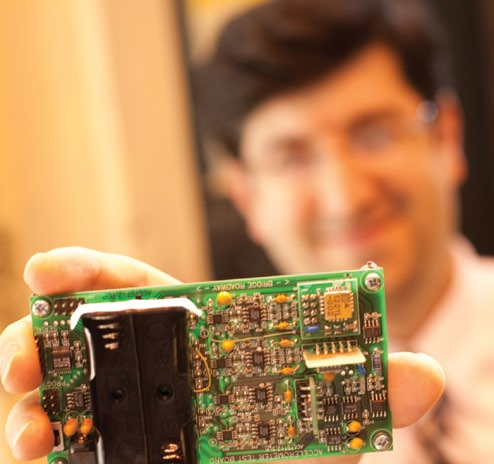Wireless sensor networks, says Shamim Pakzad, are ideal for monitoring the stresses imposed on bridges by auto traffic, earthquakes and other loading events. The sensors measure the steady stresses of traffic and the powerful, multidirectional loading of earthquakes, says Pakzad, the P.C. Rossin Assistant Professor of civil and environmental engineering.
Because they are cheaper and easier to install and maintain than wired sensors, it is possible to fit a bridge with hundreds or thousands of wireless sensors, versus several dozen of the wired variety.
But challenges must be overcome before wireless networks realize their full potential, says Pakzad. Chief among them is priority-based task management.
Pakzad is working with Liang Cheng, associate professor of computer science and engineering, to enable a wireless sensor network to preempt a scheduled activity, such as monitoring traffic stresses, and switch to a more urgent task, such as monitoring responses to an earthquake or explosion.
“A structure can vibrate very quickly during an earthquake,” says Pakzad. “You may need to take up to 100 samples per second. This produces a large volume of data that can quickly become unmanageable. We have to decide which data gets transmitted first, which does not need to be transmitted, and whether it is possible to send a summary of the data for later analysis.”
Pakzad, who has an NSF grant, is developing software that optimizes the performance of sensor networks by dealing with networking, routing and time synchronization. His goal is to enable wireless networks to identify and communicate the locations on a bridge that have sustained damage, either from traffic or from earthquakes or other events.
“In the event of an earthquake, you need immediate analysis to tell you a bridge’s condition, whether it can be operated safely, whether emergency response teams can cross it to get to various parts of the city.
“The measurements taken by each sensor need to be synchronized very accurately through a large network. Sensors must measure the vibrations and accelerations precisely at hundreds of points.”

